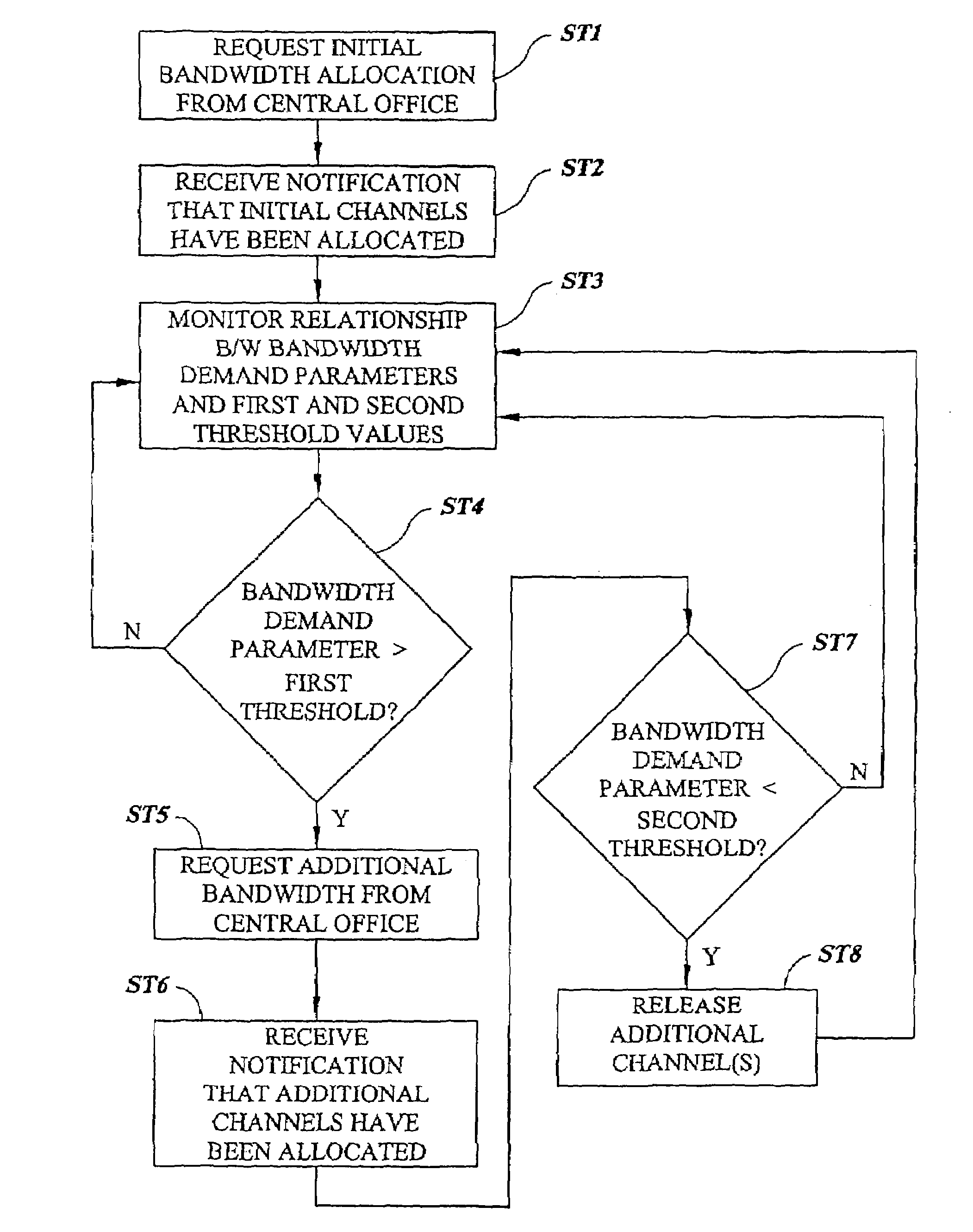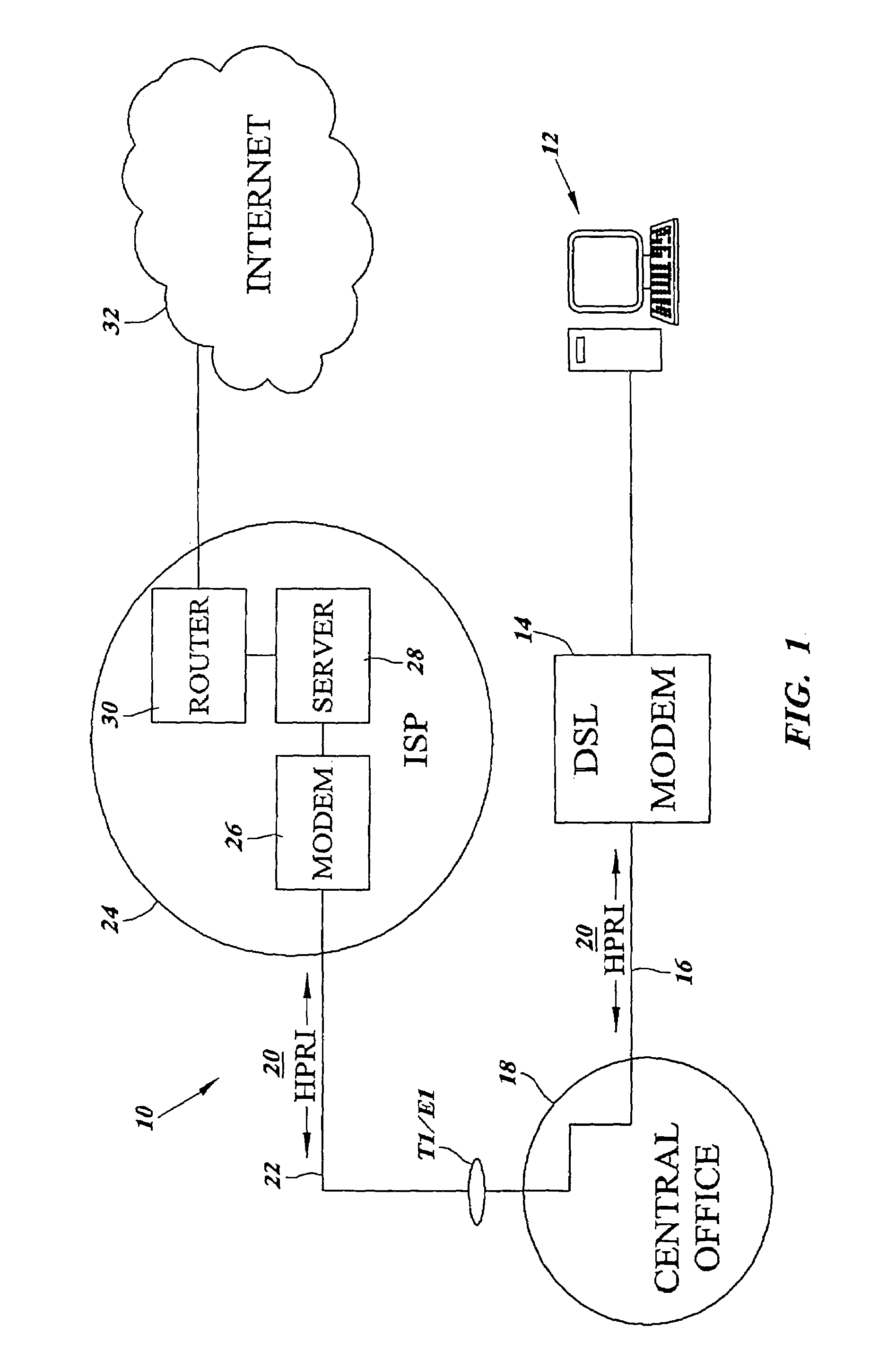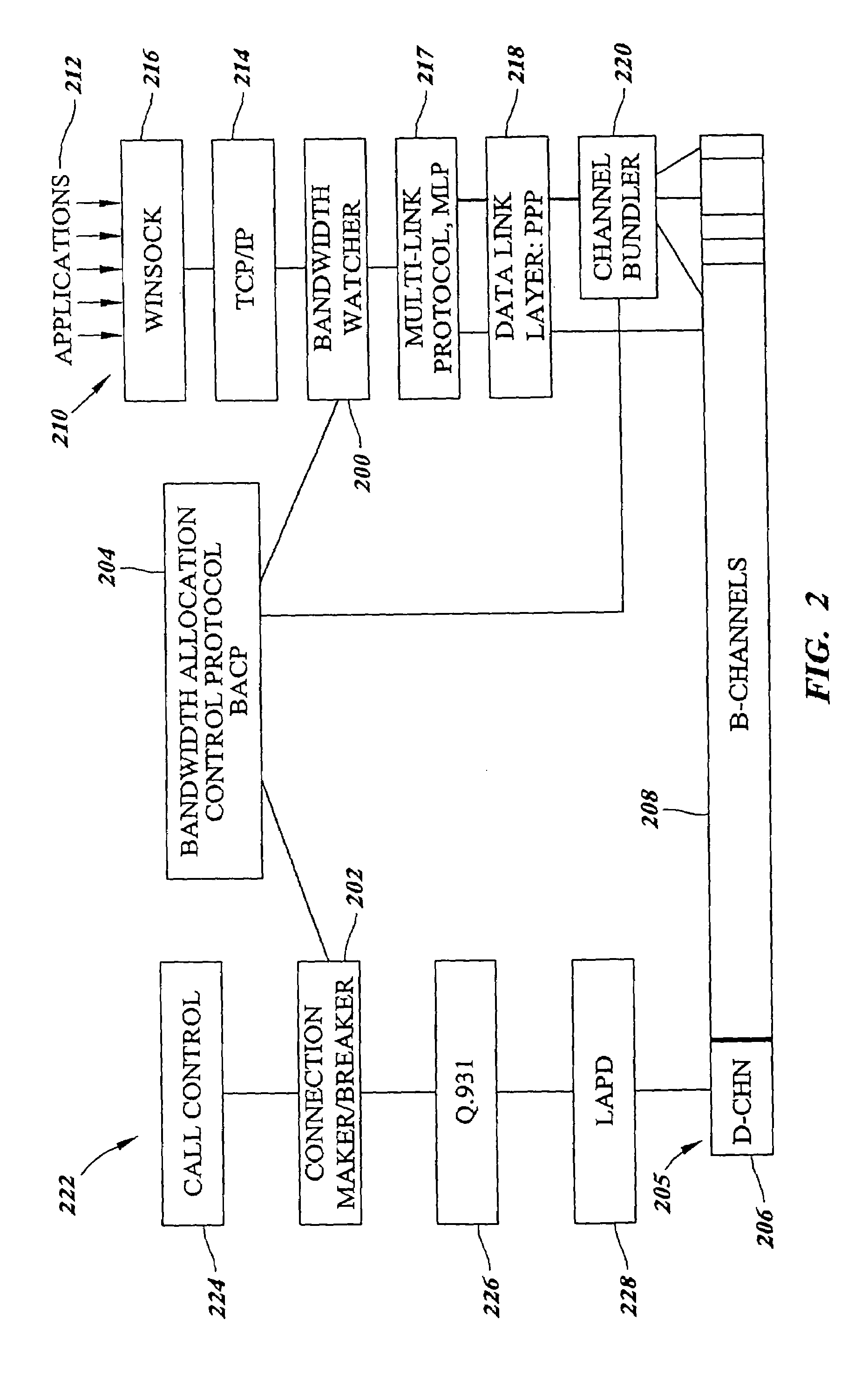System and method for dynamically varying integrated services digital network (isdn) interface bandwidth
- Summary
- Abstract
- Description
- Claims
- Application Information
AI Technical Summary
Benefits of technology
Problems solved by technology
Method used
Image
Examples
Embodiment Construction
[0025]Traditional primary rate ISDN interfaces are defined by a provisioned or fixed allocation of B and D channels. The allocation of multiple channels has typically been cost prohibitive to home users and small businesses because the user must pay for the channels whether or not they are being used.
[0026]FIG. 1 illustrates one representation of a primary rate integrated services digital network according to an embodiment of the present invention generally designated 10. Network 10 includes a user generally designated 12 connected via a modem 14 and twisted pair 16 to a telephone company central office (CO) 18. User 12 can include a home user as well as a local area network (LAN) such as found in a business office, for example an Ethernet. Modem 14 can typically include a digital subscriber line (DSL) modem or the like that provides high speed data transmission over twisted pair 16, which might include traditional copper phone lines or optical fibers. A hyper p...
PUM
 Login to View More
Login to View More Abstract
Description
Claims
Application Information
 Login to View More
Login to View More - R&D
- Intellectual Property
- Life Sciences
- Materials
- Tech Scout
- Unparalleled Data Quality
- Higher Quality Content
- 60% Fewer Hallucinations
Browse by: Latest US Patents, China's latest patents, Technical Efficacy Thesaurus, Application Domain, Technology Topic, Popular Technical Reports.
© 2025 PatSnap. All rights reserved.Legal|Privacy policy|Modern Slavery Act Transparency Statement|Sitemap|About US| Contact US: help@patsnap.com



